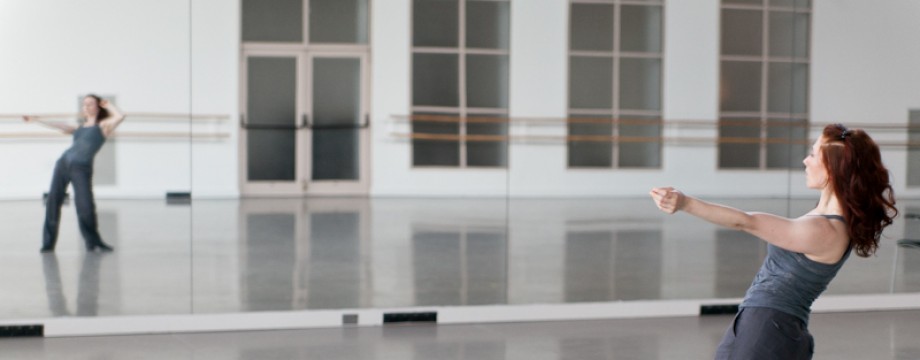On Sunday night I got to go to the San Francisco Hip Hop Dance Fest. It was a crazy journey that at times was an African Dance revival with 105 kids on stage in grass skirts, and at other times a street battle between old skool hip hop dancers with baggy shorts and big shoes, and sometimes it was like watching a screen saver that repeats calming motiffs that slide off the left hand side of the screen.
I think “Hip-Hop” was loosely interpreted, because there was an awful lot of barefoot modern dance, (not that I have anything against barefoot modern dance), as well as robotic interpretations of glitchy dub-step. I’m in the nascent stages of creating a piece of choreography with a few other dancers and so my senses were heightened as to what made me feel emotional, excited, tense, relieved or made me want to roll my eyes and hide my head in my hands.
Here are a few thoughts about what makes a piece of choreography work. And by work, I mean: you go through a journey with the dancers, they reveal something, they surprise you, you can’t take your eyes off of them, and at the end you stand and applaud and scream for them. Every group was pretty solid in my opinion (even the one with 105 kids was nailed down pretty tight), but not every group did it for me.
Some thoughts on good vs. bad choreography: (note: links aren’t from the current performances since they’re not posted online yet.)
1) Don’t blow your wad:
Every dancer has a “thing” that they do. Maybe it’s super fast feet. Maybe it’s flips. Maybe it’s slow-motion movement. Then there’s all the stuff you do in between, locomoting around the stage, transitioning between moves, stock steps and spins that everyone can do. Don’t bust out your “thing” too early. If you run out onto the stage and do a flip, then people expect you to one-up yourself later in the dance. If all you do after that is some locking and popping, you’ve kind of blown your wad. So, there’s an arc to what you give up and how soon you give it up. The Chicago FootworKINGz are an interesting case study in this. Obviously these guys move their feet really fast and that’s what they did from start to finish, but they managed not to give it all away in the first minute.
It’s true, they wowed us by hitting the stage at top speed, but then they upped the ante by throwing in some interesting formations, flips, splits and at some point in the choreography, they probably needed a break, so they slowed down to half-time while still making it look complex and fast.
If your thing is moving fast, then breaking for a phrase into slow beats can be as crowd inspiring as doing flips. Somehow the KINGz managed to create an ever increasing arc of excitement so that when they finally hit their last arc, you couldn’t believe how much they were slamming out on the stage. They got by far, the biggest standing ovation of the night.
2) Don’t waste your dancers:
Conserve their energy by drawing focus. The first number, by Mind Over Matter from San Francisco had music, costuming, and choreography that was like a very stylized version of Mortal Kombat. Somewhere between 12 and 15 dancers took the floor in even spacing and began traveling forward into audience focus… initially it was just one or two dancers but eventually everyone was moving through what looked like martial arts forms that had been hip-hopified. This was cool, except that everyone was moving at once and doing something totally different. I couldn’t focus on any one dancer without feeling like I was missing something. Eventually, the dancers started mock battling each other, and while the movement was interesting, everyone doing it at once it hard to focus. Eventually one dancer survived the battle while everyone else remained dead on the floor. It was a memorable finishing image, but I felt as if I had missed a lot. It’s sad to think of all those dancers working their ass off on stage, not to be really seen. The piece would have been so much more effective if certain groups simplified their movement so we could focus on one or two dancers at a time.
3) Tell a story, but don’t overdo it:
FBC performed a really fun”zombies in the graveyard” piece, but there was way too much “acting” to pre-recorded voices. I’ve fallen prey to this trick many times back in my performance art/burlesque days, but in the context of a large dance festival it felt schmaltzy and a little over the top. The actual quality of dancers and movement was pretty good, but the sets, costumes and voice-overs detracted from the actual dancing.
Loose Change from San Francisco is a group that combines a modern aesthetic (simple monochromatic clothes, muted backgrounds, modern motiffs) with a hip hop edge… moments of jagged pops and locks. In the case of Loose Change, there might have been some kind of subtext, but the story was lost in the choreography. The movement was well conceived and visually engaging. To see how the dancers rippled across the stage was impressive. Eric Fenn’s conception of how to create and move shapes is masterful, but I didn’t get a sense of arc or completion from the movement. For me it was like looking at modern art… pretty splatters on a canvas, but no discernable message.
In once case I was hit over the head by the story (yes, we get it, you are zombies, your boyfriend gets eaten and then attacks you and the zombies have a party…) and in the other case I was swimming in a morass of pretty thematic vagueness.
4) Use the space:
So often, dancers clump together in the front center of the space and get stuck there. I love to see groups who use corners of the stage, who come right up to the edge and who hide in the back. I love it when dancers exit off of one side of the stage and enter on the other. Of course you should have a reason to do these things and if you are telling a story, parts of your stage are locations in your storyline.
Soul Sector from San Francisco did an interesting 3-man piece in military attire to war-themed music, but they never moved from front and center. Their story could have been converted to an engaging battle if they’d mapped out the space and used it more strategically.
5) Fight constant synchronicity:
It’s visually engaging when everyone is doing the same thing, but if your dancers have different body types or levels of ability it looks weak when the movement doesn’t match up but is obviously meant to. Choose movement that everyone can do and let people show off their best abilities.
As a choreographer from Decadance Theatre put it, “The roots of Hip Hop are about all about individual style and individual expression…” In many cases, hip hop troupes try too hard to get everyone to look and move the same way. Pick a theme that allows dancers to dress and move the way that fits their bodies best and sync up your dancers who naturally sync up. This applies to costumes too. To me, big guys in baggy shorts and shirts pull that look off just fine. Their shorter female counterparts with big busts look ridiculous in the same uniform.
Chapkis Dance probably did the best job of using lots of interesting group formations and shapes on stage, building energy, mixing up group and solo movement, telling a story (an African tribe gets invaded by an urban dude and they roast him on a spit!)… and not to mention, they were the group with 105 dancers. Wow! Here’s a sample of some of their other work.


